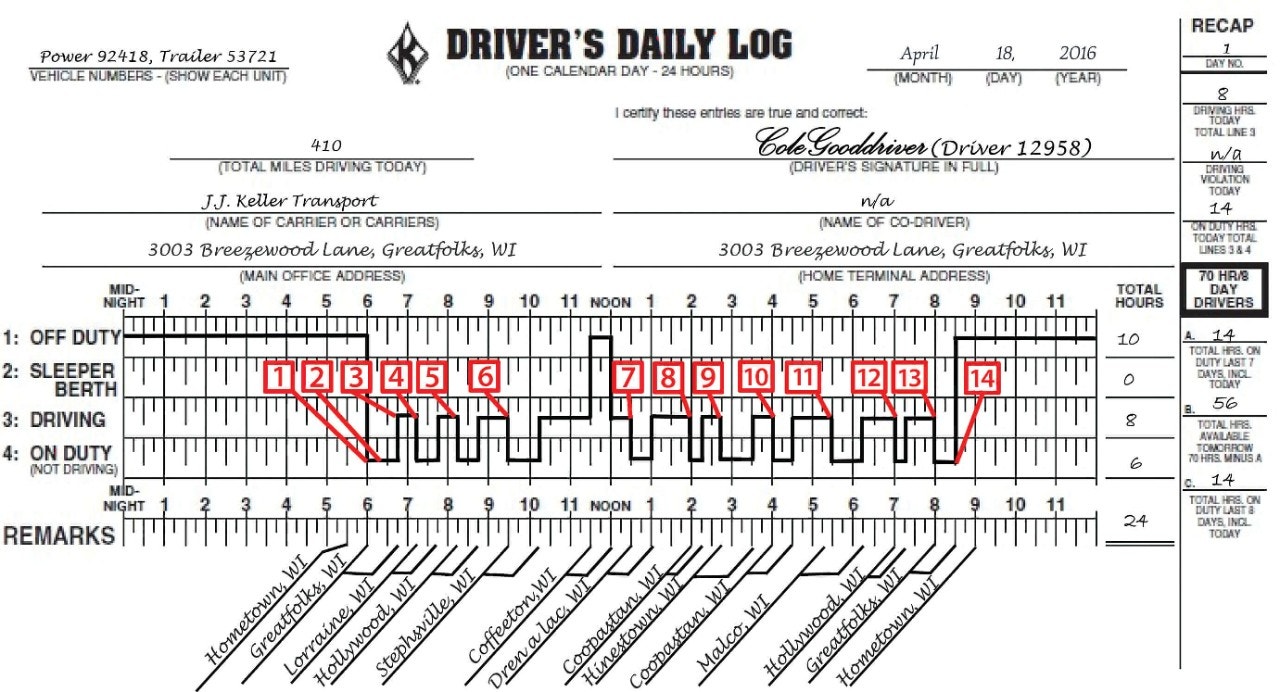Industry Business Advisor — J. J. Keller & Associates, Inc.
Supporting Documents — A Day in the Life
Do you know the five types of supporting documents? Walk through an example of how to properly use each of them.
Published On: 06/18/2021


Written by:
Rick Malchow
When the FMCSA published the final ELD mandate, a supporting documents section was added (section §395.11), which outlines the collection, use, and retention of supporting documents. The term “supporting documents” is actually used 266 times in the final rule.
There are five types of supporting documents, and you should be retaining eight supporting documents for every 24-hour period a driver is on duty. So, coming up with enough documents isn’t challenging as some might think. However, the organization and management of those documents in case of an audit is an ongoing struggle for many fleets.
Collecting Supporting Documents
It should be noted that a driver is not responsible for obtaining all of the supporting documents. In fact, a driver may never even see some of the documentation. Let's take a look at a day in the life of regional drive Cole Gooddriver.

1– 06:00 Drives his CMV from home to the terminal and in-gates into the facility. His carrier keeps a gate record.
2– 06:15 Enters the facility and receives his work assignments for the day. It is a multi-stop run.
His dispatcher reviews the assignments with him, and they are sent to his truck.
3– 06:45 Out-gates from the facility.
4– 07:15 Arrives at his first customer for the day. He picks up a loaded trailer and receives his time-stamped bill of lading.
5– 08:15 Arrives at a truck stop with a certified scale. He scales his load and tops off his tanks.
6– 09:30 Arrives at stop one, a partial unload.
7– 12:30 Arrives at stop two, a partial unload.
8– 14:00 Pulls into a DOT scale and is weighed.
9– 14:45 Arrives at the consignee and is told that he needs to hire a lumper for $200. He’s unloaded and picks up the lumper receipt.
10– 16:00 Goes through the same scale, and they notice he has a marker light out. He is asked to pull around for a vehicle inspection.
11– 17:30 Arrives at the second shipper for the day. He’s loaded and receives his bills.
12– 19:00 Stops at a truck stop to scale the load. While at the truck stop, he purchases a lamp to repair the marker light.
13– 20:00 In-gates at the terminal and drops his loaded trailer. Cole completes his post-trip inspection.
14– 20:30 Out-gates bobtail and heads for home under personal conveyance.
Including the original work assignment, Cole sent and received messages from his dispatcher, manager, and customer service.
Five Types of Supporting Documents
At the end of the day, Cole ended up with more than 10 supporting documents that fall within the 5 required types:
1. Bills of lading, itineraries, schedules, or equivalent documents that indicate the origin and destination of each trip.
- Bill of lading from the shipper at 07:15 (driver carried), and
- Bill of lading from the shipper at 17:30 (driver carried).
The number could be increased if Cole received separate delivery receipts at the stops and the consignee.
2. Dispatch records, trip records, or equivalent documents:
- The carrier sent Cole’s work assignments to his truck. This is counted as one record (driver did not possess),
- The daily in-gate and out-gate record is one document unless the in-gates are on one document and the out-gates are on another document (driver did not possess), and
- DOT inspection report (driver carried).
If the gate records are separate, both need to be included because of being the first and the last.
3. Expense receipts:
- Two scale receipts (driver carried),
- Fuel receipt (driver carried), and
- Lumper receipt (driver carried).
4. Electronic mobile communication records, reflecting communications transmitted through a fleet management system (FMS) (the record is counted as one document):
- Cole messaged back and forth with his carrier. The record is one document (driver did not possess).
5. Payroll records, settlement sheets, or equivalent documents that indicate payment to a driver:
- As an activity-based driver, Cole’s pay statement breaks down his loads or movements (driver did not possess).
Maintaining Supporting Documents
As mentioned earlier, you only need to keep eight of these documents. However, since Cole has more than eight, his fleet manager should retain the documents with a timestamp over documentation without a date and time.
Managing these records is a challenge for some fleets, especially if they aren’t using ELDs and fuel cards to automate the collection of this data.
If this sounds familiar, a fleet management system like J. J. Keller® Encompass can help. It allows you to upload and categorize data elements from supporting documents and easily share documents right from the solution with internal and external partners. And if you’re audited, you can produce supporting documents that substantiate your driver’s activities. Talk with a compliance specialist today to see how Encompass can support your DOT recordkeeping efforts. Or call 855.693.5338.
Hear from Our Experts!
Watch this episode of the DOT & ELD Regulatory Minute for guidance from J. J. Keller regulatory experts. Subscribe to our YouTube channel for the latest compliance & safety insights!
You may also enjoy the following articles:
Sign up for our newsletter!
We'll help you stay on top of regulations, best practices, and fleet industry news. Sign up to receive a monthly email notification with links to our most recent blog articles, free resources, and event invites.
